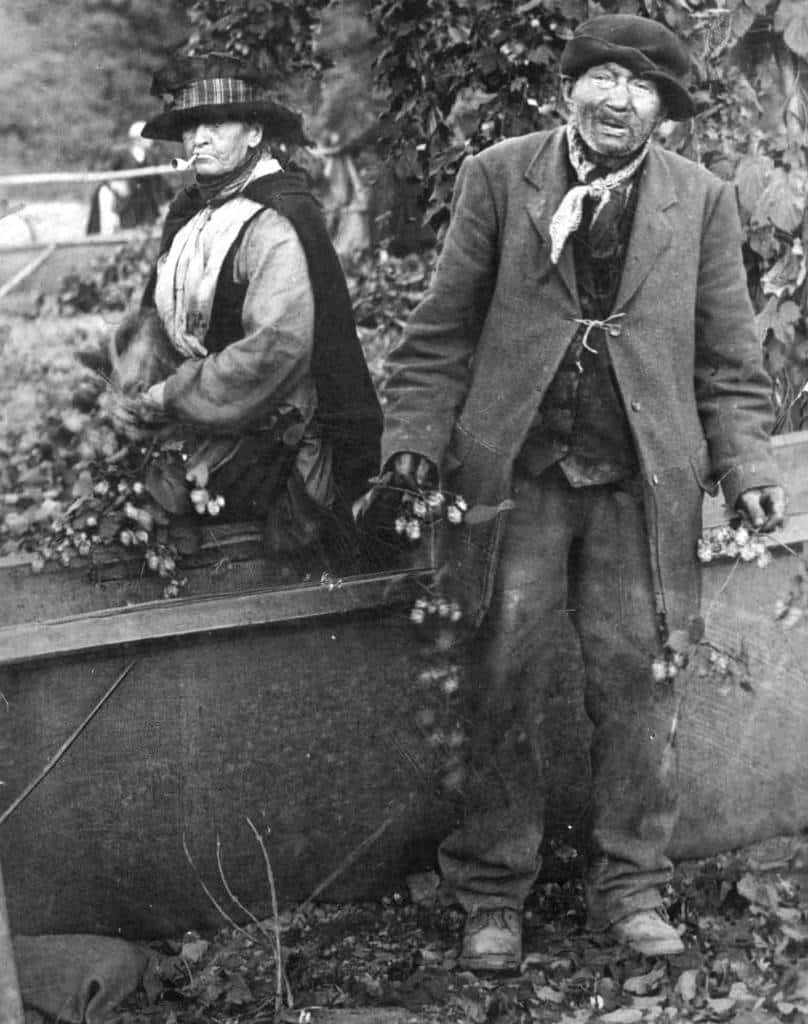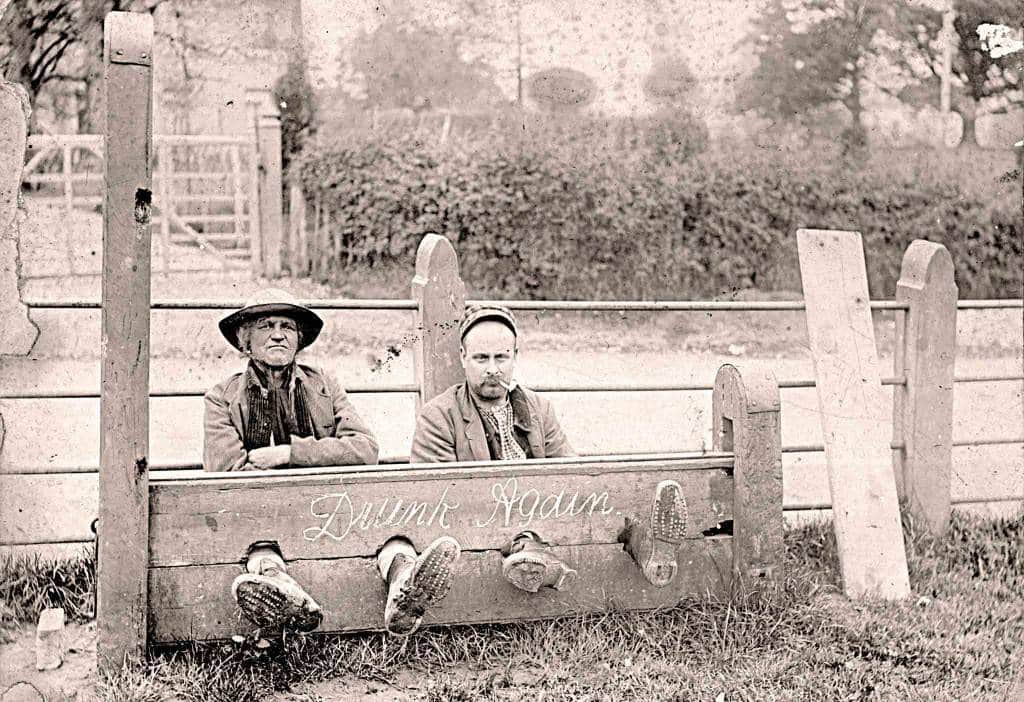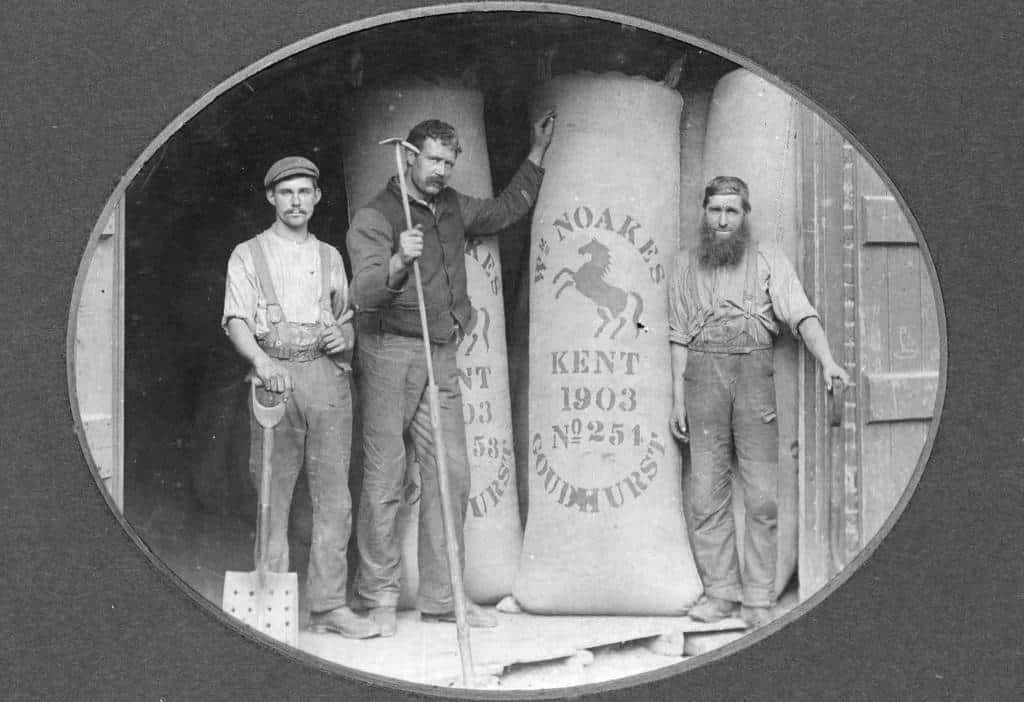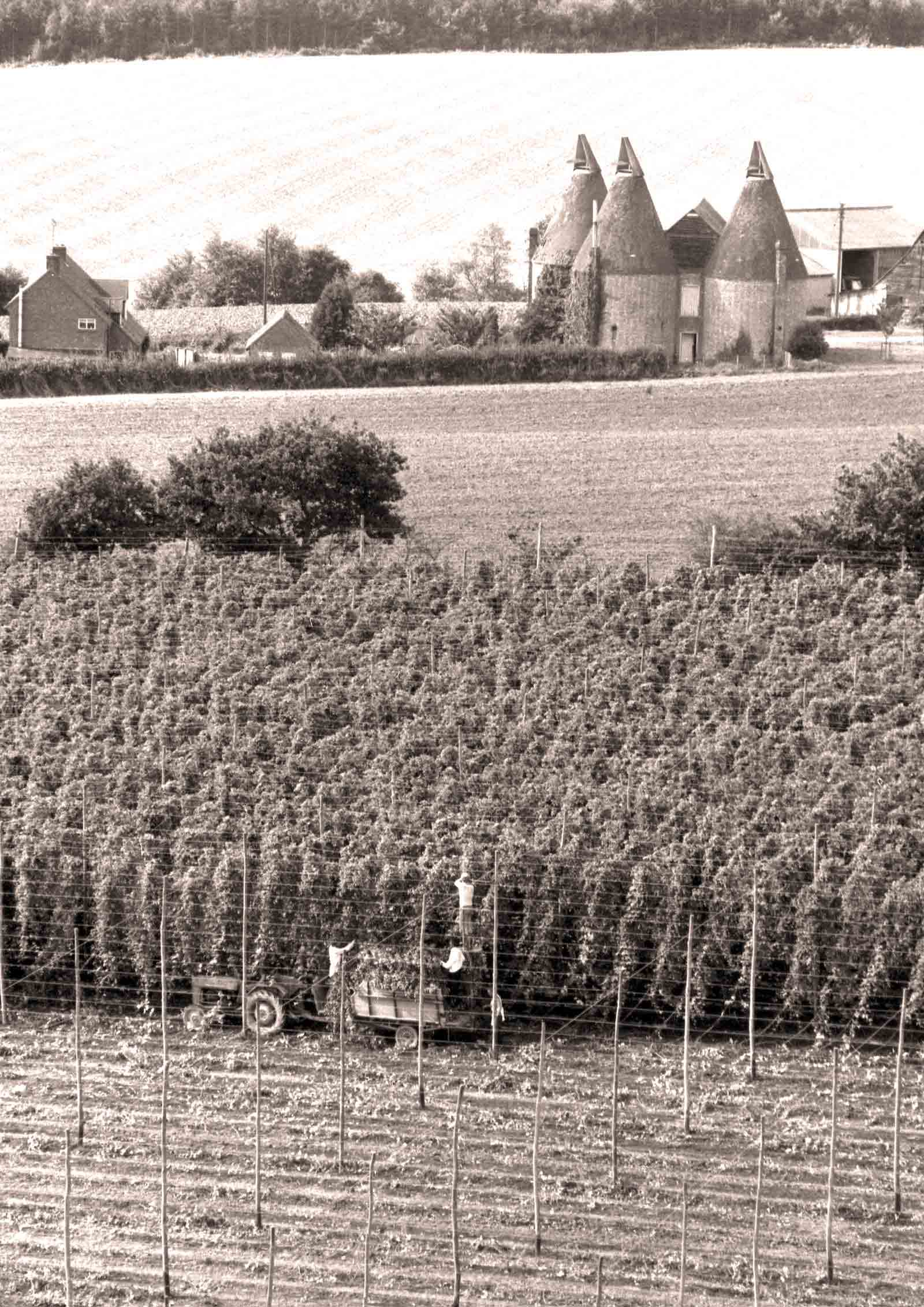“During the summer of 1982 I decided to take my camera into the hop gardens surrounding the Goudhurst area, with the objective of capturing the symmetry of hop growing.
I was mesmerised by them, and thought that the poles, green hops and miles of stringing created such a strong visual impact across the thousands of acres of surrounding countryside that I just had to photograph this idyllic country scene.
I was also aware that by then the once thriving industry was slowly dying. This decline was probably instigated by the numerous machines put into place in the mid-1960s, into the hop sheds, and also due to the fact costs were rapidly increasing against a falling demand for our hops.
So, after taking a number of pictures of these stunning rural landscapes adorned with hops during the early 80s, I now consider them to be archive records of how the Kentish landscape used to look.
The hops have all but pretty much vanished and the majority of oast houses are now converted into residential properties, but the legacy of hop-picking still lives on through these precious photographs.
But as well as my own hop images, I have a big collection of other historical ones which date from 1886 up to the 1950s.
They capture everything from folk at work in the hop gardens to others larking about – possibly after a little too much liquid refreshment!
Although most of the hop-picking industry has totally gone from this area now, there are still a few places that carry out hop-picking by hand every September. They include Little Scotney Farm, part of the National Trust estate, just outside Tunbridge Wells at Lamberhurst.

Westerham Brewery are involved in the operation here as three different varieties of hops are used to produce the Scotney Ale brand on sale.
Throughout the month of September, Scotney is putting on a series of twice-daily hop walks where visitors can enjoy visits to the hop gardens, picking shed, drying oast and hopper huts, and then finish up with a little sample of Scotney’s ale. Sounds like a perfect way to pass the time. Cheers!”
If you would like to discover more of Paul Harvey’s fascinating archive on hop-picking, then you can call him on 07736 898240

DRINK IN THESE FASCINATING HOP-PICKING FACTS
- The word ale was originally reserved for brews produced from malt without hops. This was the original drink of the Anglo-Saxons and English, whereas ‘beer’, a brew using hops, probably originated in Germany
- Hops were cultivated in the Low Countries (now known as Belgium and Holland) from the 13th century and introduced to England in the Maidstone area at the end of the 15th century
- By 1724 there were 6,000 acres of hop gardens in East Kent alone
- By the 19th century it was the golden age of the hop industry. Acreage continued to increase until 1878, when it reached its peak with 77,000 acres
- In the early days of brewing hops the sole reason for using them was to preserve the beer and keep it in good condition

- Pasteurisation arrived in the late 1870s and fewer hops were needed as a preservative. Clean water became more available and this may have reduced demand for beer. These factors meant there were only 32,000 acres of land growing hops by 1909
- By the early 19th century the main hop growing parishes were in The Weald of Kent. Acreages included: Cranbrook 819, Benenden 584, East Farleigh 590, East Peckham 614, Hadlow 618, Marden 578, Mereworth 569, Tonbridge 723, Wrotham 667 and Yalding 937 acres
- Thousands of Londoners invaded Kent for hop-picking time at the end of August, and for many it was their paid holiday. Lots of them stayed on and settled here
- In 1922 the first hop-picking machine was imported from America by a Worcester grower, but machine picking didn’t become widely practised until the 1950s as the American machines were not suited to conditions in England and hand-pickers were still available
- Horticulture Research International at Wye College in Kent joined with England’s hop growers in the 1980s to develop a new category of hops called hedgerows. These grow to eight feet rather than the traditional 20 feet, are cheaper to establish, can be harvested at speed by machine, require less chemicals and provide a wonderfully beneficial environment for bugs and insects.








